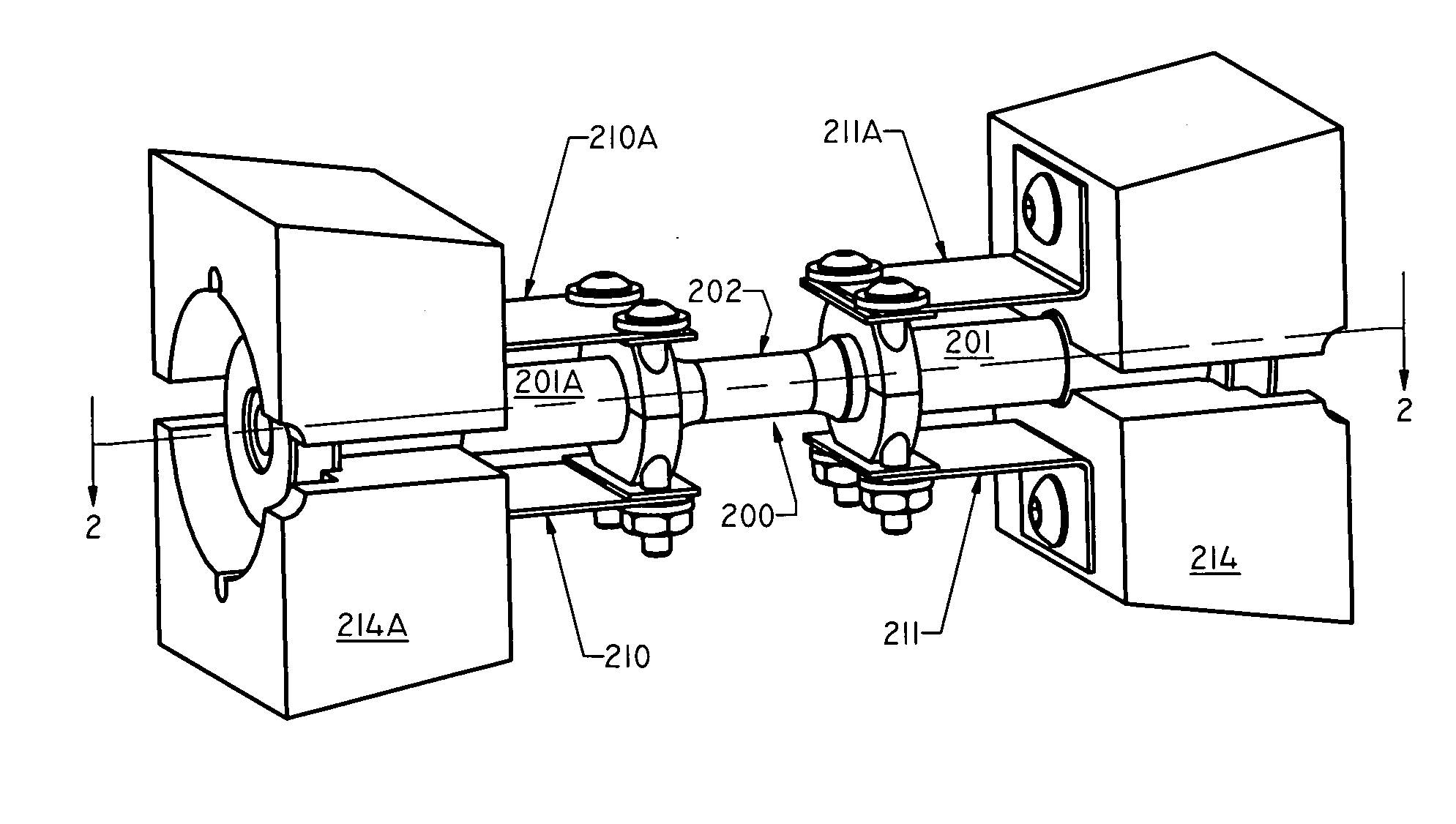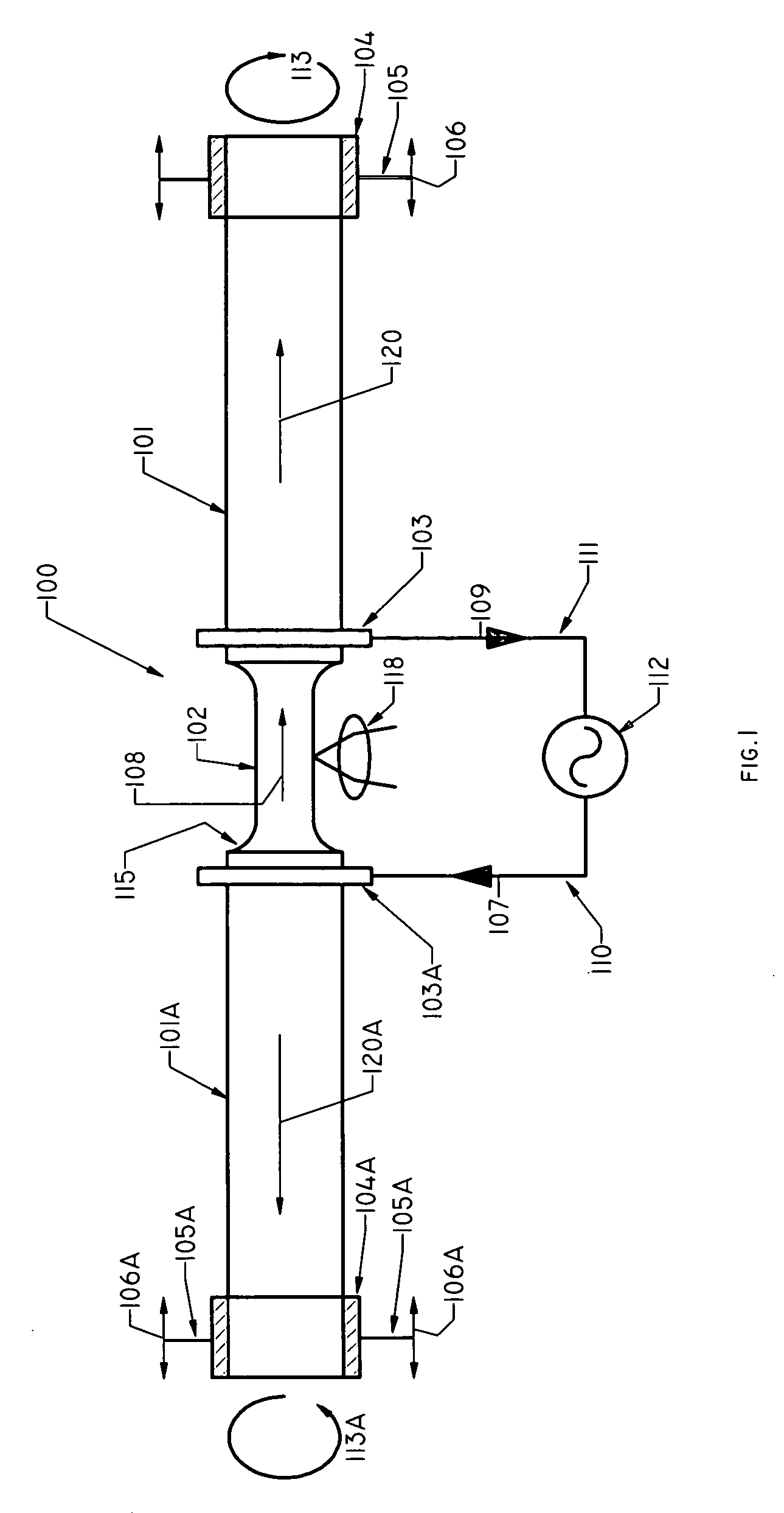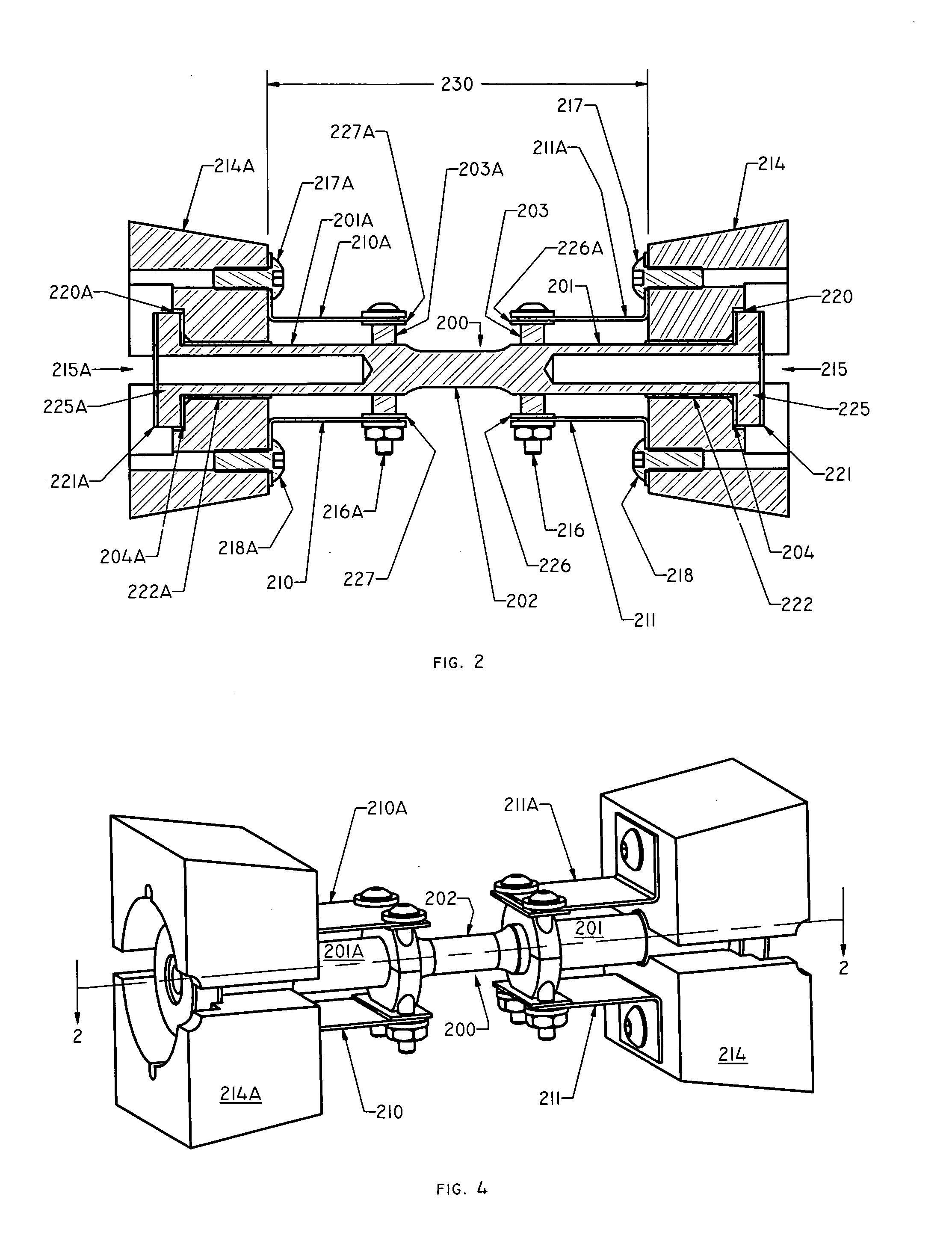Technique for applying direct resistance heating current to a specific location in a specimen under test while substantially reducing thermal gradients in the specimen gauge length
- Summary
- Abstract
- Description
- Claims
- Application Information
AI Technical Summary
Benefits of technology
Problems solved by technology
Method used
Image
Examples
Embodiment Construction
[0031] After considering the following detailed description, those skilled in the art will clearly realize that the broad teachings of the invention can be readily and advantageously utilized in conjunction with any one of a wide variety of material testing systems used for thermo-mechanical testing and physical simulation to impart a self-resistive specimen heating capability to those systems. Such testing systems would include not only tension and compression systems but also torsion systems. The self-resistive heating capability is well suited to replace induction and furnace heating systems commonly used to obtain essentially zero thermal gradients along a specimen gauge length. Moreover, even apart from its use with testing systems, the present invention can be used across a wide variety of industrial heating applications to produce localized self-resistive heating in conductive materials, such as, for example, to provide heat treatment to a metallic object either in a producti...
PUM
| Property | Measurement | Unit |
|---|---|---|
| Length | aaaaa | aaaaa |
| Force | aaaaa | aaaaa |
| Electrical conductivity | aaaaa | aaaaa |
Abstract
Description
Claims
Application Information
 Login to View More
Login to View More - R&D
- Intellectual Property
- Life Sciences
- Materials
- Tech Scout
- Unparalleled Data Quality
- Higher Quality Content
- 60% Fewer Hallucinations
Browse by: Latest US Patents, China's latest patents, Technical Efficacy Thesaurus, Application Domain, Technology Topic, Popular Technical Reports.
© 2025 PatSnap. All rights reserved.Legal|Privacy policy|Modern Slavery Act Transparency Statement|Sitemap|About US| Contact US: help@patsnap.com



